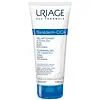What's inside
What's inside
 Key Ingredients
Key Ingredients

 Benefits
Benefits

 Concerns
Concerns

 Ingredients Side-by-side
Ingredients Side-by-side

Water
Skin ConditioningSodium Chloride
MaskingSodium Laureth Sulfate
CleansingSodium Cocoyl Glutamate
CleansingDecyl Glucoside
CleansingButylene Glycol
HumectantCeteareth-60 Myristyl Glycol
EmulsifyingCoco-Glucoside
CleansingGlyceryl Oleate
EmollientSodium Methyl Cocoyl Taurate
CleansingCopper Gluconate
Skin ConditioningZinc Gluconate
Skin ConditioningIsopropyl Alcohol
SolventManganese Gluconate
Skin ConditioningCitric Acid
BufferingPhytosphingosine
Skin ConditioningAsiaticoside
AntioxidantWater, Sodium Chloride, Sodium Laureth Sulfate, Sodium Cocoyl Glutamate, Decyl Glucoside, Butylene Glycol, Ceteareth-60 Myristyl Glycol, Coco-Glucoside, Glyceryl Oleate, Sodium Methyl Cocoyl Taurate, Copper Gluconate, Zinc Gluconate, Isopropyl Alcohol, Manganese Gluconate, Citric Acid, Phytosphingosine, Asiaticoside
Water
Skin ConditioningGlycerin
HumectantCoco-Glucoside
CleansingBetaine
HumectantCetearyl Alcohol
EmollientStearic Acid
CleansingPhenoxyethanol
PreservativeBenzyl Alcohol
PerfumingXanthan Gum
EmulsifyingAcrylates/C10-30 Alkyl Acrylate Crosspolymer
Emulsion StabilisingInulin
Skin ConditioningEthylhexylglycerin
Skin ConditioningSodium Hydroxide
BufferingDehydroacetic Acid
PreservativePolyquaternium-10
Trisodium Ethylenediamine Disuccinate
Hydrolyzed Sodium Hyaluronate
Skin ConditioningSodium Hyaluronate
HumectantLecithin
EmollientWater, Glycerin, Coco-Glucoside, Betaine, Cetearyl Alcohol, Stearic Acid, Phenoxyethanol, Benzyl Alcohol, Xanthan Gum, Acrylates/C10-30 Alkyl Acrylate Crosspolymer, Inulin, Ethylhexylglycerin, Sodium Hydroxide, Dehydroacetic Acid, Polyquaternium-10, Trisodium Ethylenediamine Disuccinate, Hydrolyzed Sodium Hyaluronate, Sodium Hyaluronate, Lecithin
 Reviews
Reviews

Ingredients Explained
These ingredients are found in both products.
Ingredients higher up in an ingredient list are typically present in a larger amount.
Coco-Glucoside is a surfactant, or a cleansing ingredient. It is made from glucose and coconut oil.
Surfactants help gather dirt, oil, and other pollutants from your skin to be rinsed away.
This ingredient is considered gentle and non-comedogenic. However, it may still be irritating for some.
Learn more about Coco-GlucosideWater. It's the most common cosmetic ingredient of all. You'll usually see it at the top of ingredient lists, meaning that it makes up the largest part of the product.
So why is it so popular? Water most often acts as a solvent - this means that it helps dissolve other ingredients into the formulation.
You'll also recognize water as that liquid we all need to stay alive. If you see this, drink a glass of water. Stay hydrated!
Learn more about Water